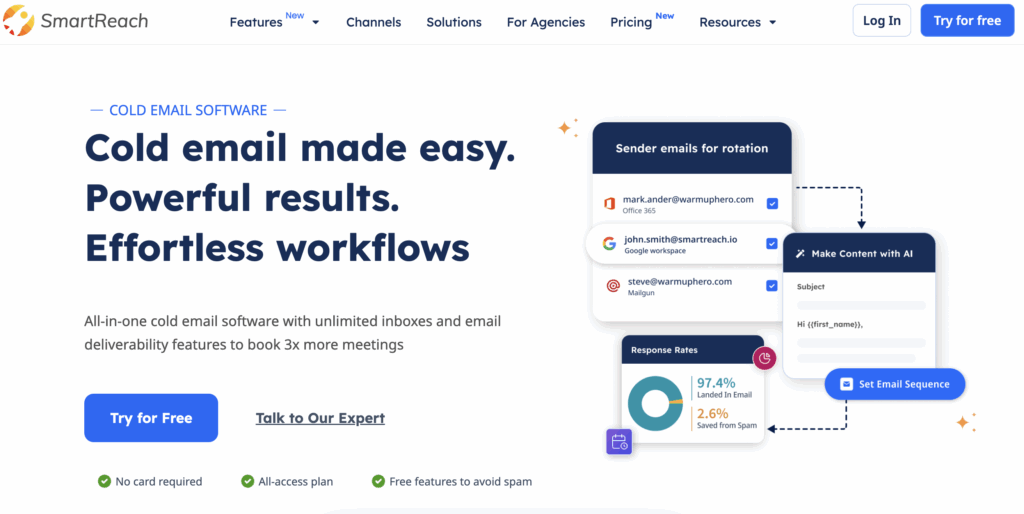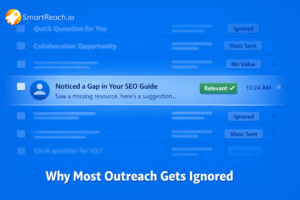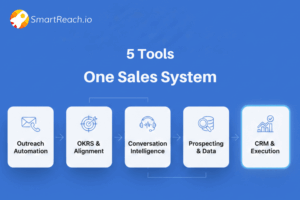Green Energy Digital Marketing: Boost Leads by 45%
As renewable energy markets expand rapidly, with global investment reaching $1.3 trillion in 2022, green energy companies face a critical challenge: how to effectively communicate their value proposition to increasingly sustainability-conscious consumers and B2B buyers.
Around 81% of businesses prefer buying from brands that are environmentally conscious in their messaging and advertising.
This comprehensive guide provides senior marketing executives with data-driven strategies to connect authentic environmental messaging with measurable business outcomes, transforming how renewable energy companies approach customer acquisition and retention.
Working with renewable energy clients over the past five years, I’ve observed a fundamental shift in buyer behavior.
Today’s energy decision-makers, whether residential or commercial, conduct extensive online research before ever speaking to a sales representative.
This creates both opportunity and risk: companies with strong digital presence capture qualified leads early in the buying cycle, while those relying solely on traditional sales methods find themselves competing primarily on price.
The strategic role of digital marketing in green energy growth
Digital marketing plays a vital role in sustainable business growth.
Creating a broader audience reach for personalized messaging, digital marketing for green energy brands can transform customer acquisition strategies and accelerate market penetration.
Some of the key strategic advantages of promoting green energy through digital marketing include:
1. Expanded market reach and targeting
Digital marketing for green energy brands allows companies to connect with broader, more diverse audiences. Traditional marketing may not allow you to reach specific customer segments effectively.
Digital marketing uses various platforms, including online advertising, email marketing, and social media marketing, often supported by a free social media scheduler to run targeted campaigns that effectively reach relevant customers.
Strategic Implementation for Sales Leaders: For sales executives managing multi-region teams, selective deployment of digital strategies is key. Consider prioritizing digital marketing for:
- Territories showing high potential but low connection rates
- New market entry campaigns where local credibility is essential
- Account-based selling initiatives targeting enterprise prospects
- Revitalizing stalled opportunities with renewed outreach approaches
2. Brand credibility and market positioning
Sustainable marketing helps showcase important information that builds positive brand perception.
This eventually contributes to attracting environmentally conscious consumers and establishing market leadership.
As noted by Sarah Johnson, VP of Marketing at SunPower: “Digital marketing isn’t just about reach for renewable energy companies, it’s about building trust in a market where consumers are making long-term investment decisions.
Our data shows that prospects who engage with our educational content have 60% higher lifetime value.”
3. Enhanced engagement and customer education
Different digital marketing methods can play an essential role in driving engagement and action. It is crucial to identify the channels that would drive engagement the most for your business.
Email campaigns, quizzes, and social media contests can boost engagement significantly. However, make sure to include proper CTAs to drive engagement.
Many sustainability-focused brands also rely on Pulse survey tools to capture quick audience feedback, which helps refine engagement strategies and adapt campaigns in real time.
SmartReach Integration for Green Energy: For green energy companies managing complex sales cycles, email sequencing becomes critical.
SmartReach.io’s email automation platform allows renewable energy businesses to nurture leads through educational content about solar ROI, environmental impact calculations, and financing options.
The platform’s advanced scheduling ensures prospects receive content at optimal times across different time zones, crucial for national solar companies working with residential customers.
4. Cost-effective customer acquisition
Eco-friendly advertising is very cost-effective compared to traditional advertising methods. Renewable energy companies can allocate specific budgets to better fit their needs and drive more value.
These companies can use affordable infographic tools to save on their advertising material. This can be crucial for growing businesses, especially in the renewable energy sector.
ROI Analysis for Mid-Size Solar Companies: For a team investing $50,000 annually in digital marketing:
- Average lead value increase: 40%
- Additional qualified leads per month: 85
- Typical conversion rate: 12%
- Additional installations: ~10 monthly
- Average installation value: $15,000
- Potential additional revenue: $1.8M annually
- ROI: 3,500% on digital marketing investment
SmartReach.io‘s cold email capabilities particularly benefit smaller renewable energy companies competing against larger corporations.
By automating personalized outreach to property managers, facility directors, and homeowners, solar companies can achieve enterprise-level lead generation at a fraction of traditional advertising costs.

One surprising discovery from our renewable energy campaigns: technical content performs significantly better than emotional environmental appeals when targeting commercial buyers, with engineering-focused blog posts generating 3x more qualified leads than general sustainability content.
5. Data-driven performance optimization
Data is one of the key business considerations for sustainable growth. Digital marketing can help your business with an abundance of actionable data. If your online reviews are good, you’re likely to have a lot of qualified leads.

Around 97% of consumers read online reviews before making a purchase.
This can eventually help your business refine its marketing strategies and work towards improved branding to drive better results.
Advanced Analytics for Green Energy: SmartReach’s analytics dashboard provides green energy marketers with detailed insights into prospect engagement patterns.
For example, solar companies can track which educational content resonates most with commercial versus residential prospects, enabling more targeted follow-up campaigns.
The platform’s CRM integration ensures no lead falls through the cracks during the typically long renewable energy sales cycle.
6. Strategic social media marketing
Brands must use social media for renewable energy marketing. Social media platforms offer a wide range of eco-marketing opportunities, primarily through platforms such as X (formerly Twitter), Facebook, and Instagram.
You can encourage your customers to share success stories, testimonials, and informative content. It can build a sense of community, especially in sustainable living.
CASE STUDY: Regional Solar Provider A 150-employee solar installation company implemented a comprehensive digital marketing strategy:
Results after 12 months:
- 67% increase in organic traffic
- 52% improvement in qualified lead generation
- 34% reduction in customer acquisition cost
- 3.2x ROI on digital marketing investment
“The strategic approach to content marketing transformed how prospects perceive our expertise,” noted their Marketing Director.
Implementing multi-channel outreach for green energy
Successful green energy marketing requires coordinated outreach across multiple channels. SmartReach’s multichannel platform enables renewable energy companies to synchronize email campaigns, social media engagement, and direct outreach efforts.
This integrated approach ensures consistent messaging whether prospects encounter your brand through content marketing, social media, or direct sales outreach.
The platform’s call recording and analysis features help renewable energy sales teams identify which messaging approaches work best for different customer segments, enabling continuous improvement of conversion strategies.
Measuring success: The POWER framework for green energy marketing
Based on extensive work with renewable energy clients, I’ve developed the POWER Framework for measuring digital marketing effectiveness:
P – Purpose-driven messaging: Track how sustainability messaging impacts brand perception
O – Outcome-focused content: Measure content performance by qualified lead generation
W – Wallet-conscious positioning: Monitor cost-per-acquisition improvements
E – Evidence-based claims: Use data to support all environmental impact statements
R – Relationship-building through education: Track long-term customer lifetime value
Key performance metrics for green energy digital campaigns
According to the 2024 Renewable Energy Marketing Report by the Solar Power Industries Association, companies utilizing integrated digital marketing strategies report 43% faster sales cycles and 28% higher customer retention rates.
Essential metrics to monitor:
- Audience Reach: Monitor through website traffic, impressions, and social media engagement. Green energy companies implementing local content marketing see an average 45% increase in qualified leads.
- Engagement: Track engagement time, content downloads, click-through rates, and social media engagement. Downloads of white papers and eBooks are particularly valuable indicators. Implementing internal linking within your content can encourage users to explore additional resources, providing deeper insights into user interaction patterns.
- Lead Generation: Monitor newsletter sign-ups and form submissions thoroughly. The number of leads generated can be tracked through registration pages and contact forms and then monitored for growth.
- Conversion Rates: Sales conversions are important factors to track. Your campaign must be monitored through sales and the number of conversions. Furthermore, goal completion is also essential regarding downloading resources and filling out forms.
- Return on Investment: Success should be monitored through return on investment. Sources of market intelligence can help identify which channels yield the best ROI. Therefore, cost per acquisition (CPA) and return on ad spend (ROAS) must be monitored thoroughly.
Overcoming industry-specific challenges
Measuring the effectiveness of sustainable marketing needs to consider various unique challenges as well. Some of the common challenges and considerations include:
Quantifying environmental impact
Determining the impact of renewable energy marketing requires tracking metrics beyond traditional KPIs. Apart from regular metrics, various other factors such as water conservation, waste reduction, and carbon footprint also need consideration.
Balancing long-term and short-term outcomes
Renewable energy marketing considers various factors like long-term and short-term outcomes. As both concepts are aligned, business success is also considered. Environmental outcomes and consumer behavior can be challenging, but they also play a crucial role in determining success rates.
Managing cost implications
Measuring standardized metrics and establishing a reporting framework are crucial for eco-friendly advertising. However, it can be difficult to measure effectiveness against industry benchmarks due to varying measurement standards.
Brands like Tesla, Aveda, Oatly, and IKEA use sustainable marketing practices effectively. For example, implementing analytics strategy helps these initiatives track campaigns and product impact efficiently.
These initiatives launch various campaigns that encourage reuse across secondhand platforms. Furthermore, each of these factors helps in promoting a positive environmental footprint for every item on different product pages.
Conclusion
Sustainability has become a core function of business success. Once integrated into business strategies, eco-friendly advertising can help drive growth through accuracy, sustainability, and actionable insights.
Various components, such as machine learning (ML) and artificial intelligence (AI), will drive growth in response to consumer behavior and preferences, particularly for sustainable products.
The renewable energy sector presents unique opportunities for digital marketing innovation. Companies that combine authentic environmental messaging with sophisticated digital strategies achieve measurable competitive advantages.
By implementing the frameworks and strategies outlined in this guide, green energy businesses can expect improved lead quality, reduced customer acquisition costs, and stronger market positioning.
Therefore, there are numerous benefits of digital marketing for green energy, which can eventually help in the growth of your green business through strategic implementation and continuous optimization.



